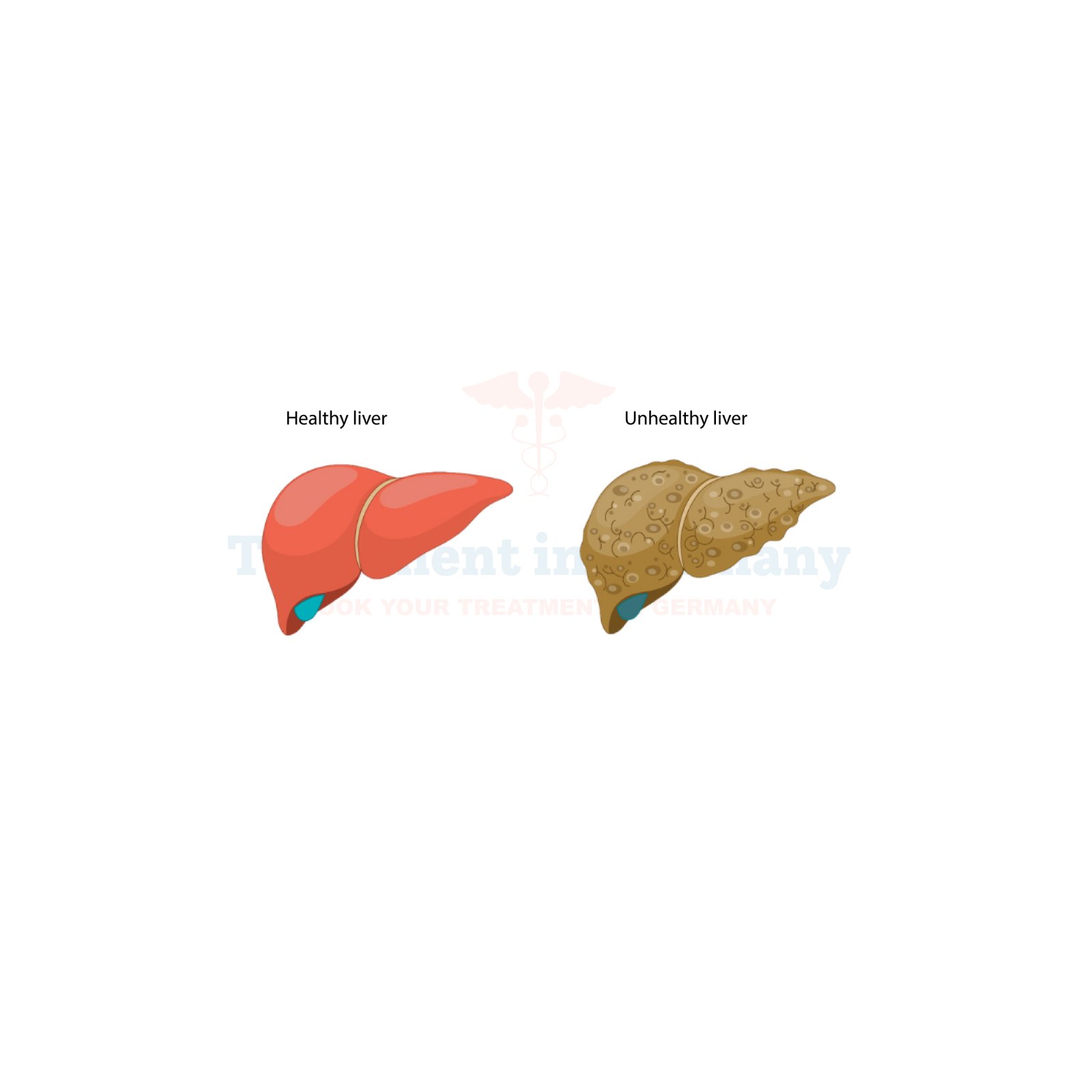Liver cirrhosis is a disease that occurs with the destruction of the liver tissue, so it interferes with its functions. Germany offers some of the best medical techniques and very effective liver cirrhosis treatments. This article aims to analyze the case of liver cirrhosis, its causes, symptoms, and treatment options in Germany, assimilating essential data and trends in the process.
Liver cirrhosis is a pre-terminal liver condition characterized by fibrosis, where healthy liver cells are replaced by scar tissues. This process causes liver failure and has impacts on several important processes that occur in the liver, including detoxification, bile production, and regulation of blood proteins.
Causes of Liver Cirrhosis
Cirrhosis is a chronic disease that occurs following years of liver inflammation. Several conditions contribute to its onset, including:
Alcohol-Induced Hepatitis
Alcohol in large proportions may lead to inflammation and harm tissues of the liver, causing cirrhosis.
Non-alcohol-related steatohepatitis (NASH)
Non-alcoholic factors that lead to fat deposits in the liver may cause scarring due to factors including hypertension and metabolic syndrome.
Chronic Hepatitis Infections
Hepatitis B and C, though chronic infections and major causes of cirrhosis, hepatitis C can now be treated with antivirals.
Autoimmune Diseases
Autoimmune hepatitis, primary biliary cholangitis, primary sclerosing, and cholangitis all cause inflammation and injury to the liver.
Genetic Disorders
Hereditary diseases such as Wilson’s disease and glycogen storage disease result in toxicity in the liver.
Toxic Hepatitis
Medications or toxins taken over time are responsible for causing scarring in the liver.
Cardiovascular
Hepatic dysfunction can be caused by congestion from heart failure and chronic kidney disease.
Symptoms of Liver Cirrhosis
Liver cirrhosis symptoms change according to the disease's stage.
Early Symptoms
Advanced Symptoms
Diagnosing Liver Cirrhosis
There is always a need to encourage early diagnosis in patients with liver cirrhosis. Diagnostic methods include:
Blood Tests
LFTs determine the liver enzymes, bilirubin, and proteins to see whether they are of normal or abnormal levels.
Imaging Tests
These methods include abdominal ultrasonography, CT scans, MRIs, and elastography that is used to evaluate liver fibrosis.
Liver Biopsy
A liver biopsy is a procedure where a very small portion of the patient’s liver tissue is obtained through a needle and is used to make sure that the patient has cirrhosis and what has caused it
Treatment Options for Liver Cirrhosis in Germany
Germany provides the best in liver cirrhosis treatment and up-and-coming medical advancement. The primary treatment strategies include:
Managing Symptoms and Complications
Innovative Treatment in Germany
Germany has a well-developed healthcare system that allows performing such methods as elastography—for non-invasive hepatosplenic stiffness evaluation—or exceptional visualization techniques to diagnose liver cancer. In primary liver cancer (hepatocellular carcinoma), radiation or chemotherapy may be used.
Liver Transplantation
In severe situations, the only cure is liver transplantation. Transplant centers in Germany are particularly famous for performing these surgeries.
Frequently Asked Questions
What causes liver cirrhosis?
Cirrhosis of the liver is a condition that occurs when the liver is damaged over a long period by viruses, alcohol, or inherited diseases such as hepatitis.
How is the condition of liver cirrhosis diagnosed?
Confirmation of the condition is done by blood tests, imaging (CT, MRI), and liver biopsy.
Can liver cirrhosis be cured?
It is toxic to scars and irreversible but early intervention will put off the advance and enhance the lifestyle of the affected person.
What are the typical consequences of cirrhosis?
These are portal hypertension, ascites, liver cancer, and infections.
Why is Germany preferred for the treatment?
Germany offers outstanding technologies, skilled personnel, advanced treatment, and care for liver ailments.
👉 Contact us for further information and receive a complimentary consultation.

.webp)
.webp)
 (1).webp)
 (1).webp)

.webp)
.webp)
 (1).webp)
 (1).webp)
